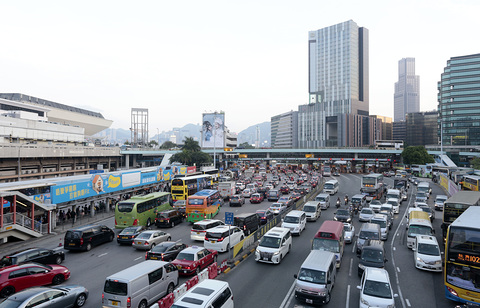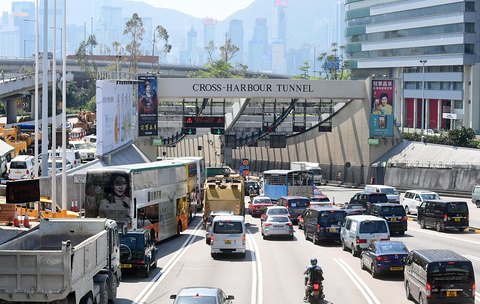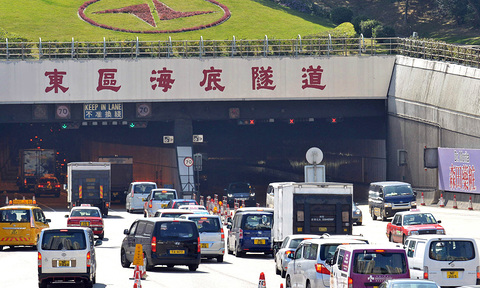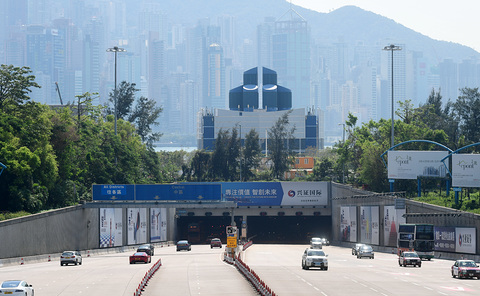Don't miss chance ease tunnel jams
13 January 2019

|
Public transport services in Hong Kong are comprehensive and efficient. With its high connectivity, our transport infrastructure has always made us proud. Currently, over 12 million passenger trips are made through different public transport services per day, which account for nearly 90% of the total passenger trips in Hong Kong. Nevertheless, the long-standing problem of cross-harbour traffic congestion has been affecting our daily lives. In particular, overcrowding in some of the road harbour crossings is a pressing issue that needs to be tackled immediately. The Government’s Toll Adjustment Proposal for traffic rationalisation among the three road harbour crossings is an effective and viable option which deserves full support.
As the public at large may not fully understand the above proposal, let me explain it briefly. The three road harbour crossings are the Cross Harbour Tunnel (CHT), the Eastern Harbour Crossing (EHC) and the Western Harbour Crossing (WHC). “Traffic rationalisation” means enabling WHC to absorb the traffic diverted from CHT and EHC in order to achieve reasonable re-distribution of traffic among the three road harbour crossings.

|

|

|
Scenes of traffic congestion at the road harbour crossings are, I believe, familiar to us. The weekday morning peak-hour traffic demands for CHT and EHC have already exceeded their design capacities by 77% and 38% respectively, causing long traffic queues on their connecting roads and even affecting non-cross-harbour traffic.
On the contrary, there is still spare capacity at WHC. The week-day morning (southbound) and evening (northbound) traffic demands for WHC are 10% and 14% below its design capacity of 118 000 vehicles per day respectively. With the upcoming commissioning of Central-Wan Chai Bypass and Island Eastern Corridor Link on 20 January (next Sunday), the traffic congestion on the connecting roads of WHC will be effectively alleviated, giving us the best opportunity to utilise the spare capacity of WHC for traffic diversion.
Hence the Government has put forward the Toll Adjustment Proposal for traffic rationalisation among the three road harbour crossings. With effect from 1 January 2020, the actual tolls payable by private cars, taxis and motorcycles for using WHC will be lowered, while the corresponding tolls of CHT and EHC will be increased at the same time. This will encourage some of the private cars, taxis and motorcycles currently using CHT or EHC to use WHC instead and thereby achieve effective traffic re-distribution.
Aimed to ease traffic congestion, the Toll Adjustment Proposal is a targeted measure which, though well intended, may not be welcomed by all. To make it easier to understand, let me outline below the benefits that it will bring and eight reasons why you should support it.
Firstly, it is estimated that by 2021, the length of traffic queues on the connecting roads to CHT and EHC will be reduced by 34% and 10% respectively during the morning peak hours and by 42% and 29% during the evening peak hours.
Secondly, the WHC tolls can be frozen, thus obviating the pressure of toll increases. During the 43 months from 1 January 2020 to the expiry of the franchise held by the Western Harbour Tunnel Company Limited (WHTCL) (i.e. 1 August 2023), drivers of private cars and motorcyclists using WHC will only be required to pay the prescribed tolls which are below the current toll levels. If the proposal is not adopted, WHTCL may increase the concessionary tolls that it charges up to the statutory toll levels without the Government’s approval (for private cars, the current concessionary toll is $70 while the statutory toll is $240).
Thirdly, the traffic at ten junctions on both sides of the harbour which are currently affected by tunnel traffic can be greatly improved, thereby benefitting non-harbour-crossing drivers.
Fourthly, improved traffic conditions will increase the work efficiency of professional drivers, which in turn enhance commercial operations such as cargo freight and logistics, bringing about more economic benefits.
Fifthly, the tunnel tolls and additional fares to be paid by taxi passengers 1 will be reduced. Besides, journey time will be shortened and the total amount of “incremental charge” for the trip will be lower, bringing about fare savings for passengers. With a uniform toll charge for return taxis without passengers using the crossings, the proposal can re-distribute cross-harbour traffic more effectively.
Sixthly, nearly 600 000 passenger journeys are made on franchised buses using the three road harbour crossings every day. Following the relief of traffic congestion, an average of up to 19 400 hours can be saved in the total travel time of road public transport passengers every day. Commuters will no longer need to leave home early to avoid traffic jams. Neither will there be cases where passengers are trapped on the road for hours.
Seventhly, carbon dioxide emissions from vehicles can be reduced by about 3 800 tonnes per year, which is equivalent to the effect of air quality improvement by planting 160 000 trees.
Eighthly, the Toll Adjustment Proposal can generate about $800 million of social cost savings per year.
The current-term Government is committed to serving the public in a proactive manner and be accountable. As part of the toll compensation scheme agreed in principle with WHTCL, the Government will pay the tolls for franchised buses using WHC on a reimbursable basis. The total amount of compensation payable to WHTCL is estimated to be $956 million. While the Government will pay the WHC tolls for the franchised bus companies, the toll savings will be set aside by the latter in their respective Franchised Bus Toll Waiver Funds to be used for reducing the magnitude of bus fare increases in the future.
Some members of the community have dissenting views about the proposal. For example, some opine that the proposed tolls for using CHT and EHC should be lowered, and others consider that the proposal should be implemented in a progressive manner. However, research data have shown that such options would not be feasible because they could result in even worse traffic congestion at EHC or obstruction of non-cross-harbour traffic owing to the traffic queues at WHC.
In sum, if the problem of traffic congestion is not tackled, the ultimate victims will be the general public. Instead of having protracted and futile discussions on the issue, it would be better for the Government to implement the Toll Adjustment Proposal in the run-up to the expiry of the WHC franchise so as to rationalise traffic among the three road harbour crossings effectively and benefit the community as a whole.

